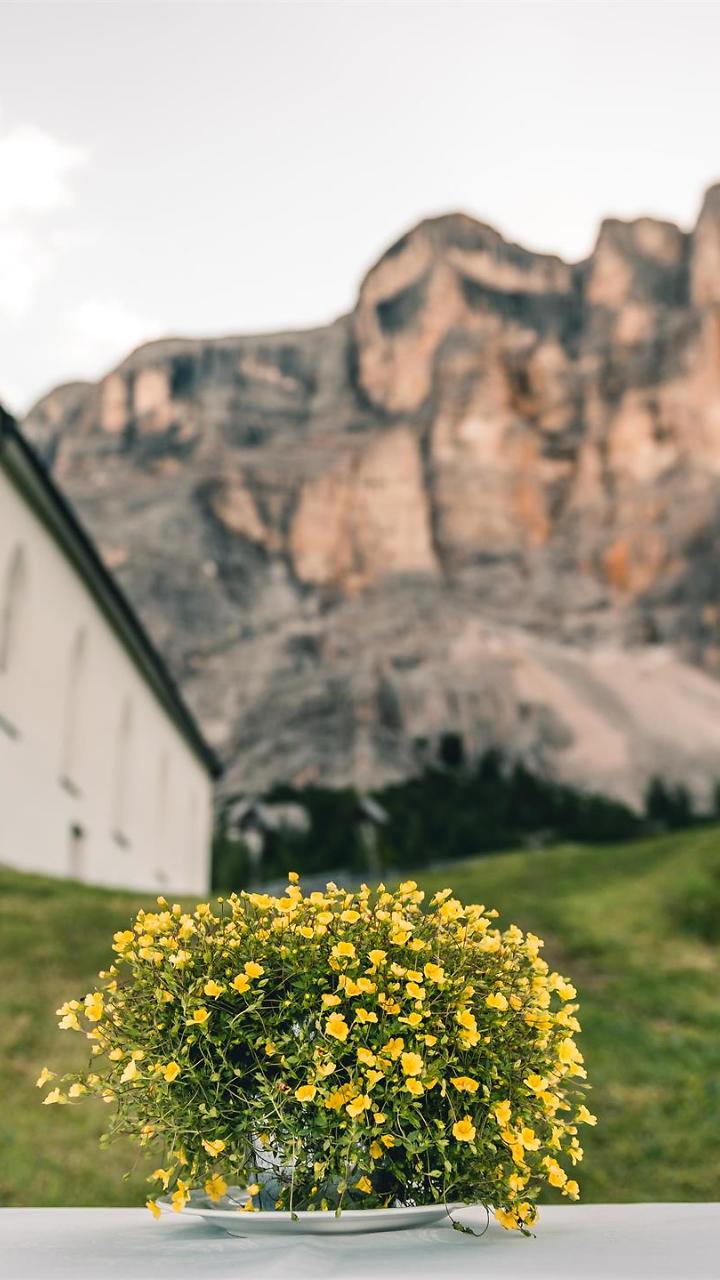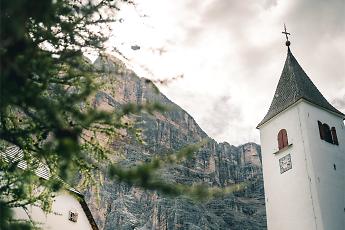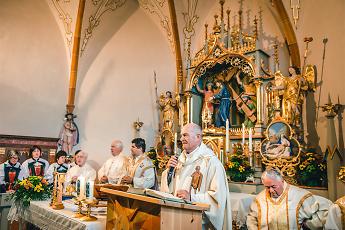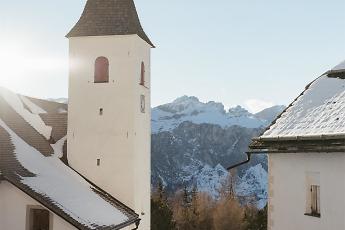
La Crusc/Santa Croce
The small highland area La Crusc/Santa Croce, located at the foot of the magnificent Santa Croce mountain, has always had a special place in the heart of the people of Val Badia.
A story that started many hundreds of years ago
Many centuries ago, when Alta Badia was still largely uninhabited, La Crusc (Holy Cross) seems to have been a pagan place of worship. It was probably the unfavourable living conditions of the area that led the first Christians to construct a sanctuary here.
Around 1010 the monks built a chapel at La Crusc where a small church was erected in the 15th century. At the end of the 17th century the church was deconsecrated by the then Austrian Emperor and was subsequently left to decay. Pilgrims and valley dwellers rescued the little church by partially rebuilding it, and some years later in the middle of the 18th century it was enlarged and embellished with a bell tower.
For a long time, the origins of La Crusc as a place of pilgrimage were dated back to 1511, on the basis of documents from the period. Two parchements emerged, however, and pointed to an even earlier existence. The first mentioned a church consecration; the second contained the story of “Morellus de Caninis” who made a pilgrimage to Rome in 1500 in order to seek favours for the La Crusc church.
Numerous relics are preserved in the altar of the church, such as those of St Leonard (to whom the parish church of San Leonardo/Badia is dedicated), St Hippolitus, St Virgilius (Bishop of Salzburg), St Mary Magdalena, St Agnes and St Barbara.
Nowadays there are several processions to the church during the summer season, and there is an important service on the first Sunday in June.
The legends surrounding the church
The building of the church
Many, many centuries ago, the inhabitants of Badia had planned to build a chapel on the “Col d’Anvi”. During the construction work however the workers kept injuring themselves on the wooden shavings. White birds collected the blood-spattered shavings and took them to the foot of the La Crusc/Santa Croce mountain. After a while the workers began to notice this and they followed the birds in order to find out where they were flying to with the shavings. Once they had arrived at the wonderful spot at the foot of the mighty Sas dla Crusc/Santa Croce, they were so impressed that they decided to build the church there.
The legend surrounding Ottwin, Count of Lurn
People in Badia like to relate how there used to be a hermit who lived at the foot of the Sas dla Crusc/Santa Croce. This hermit was no less a person than Ottwin, Count of Lurn and Pustrissa, or possibly his son Volkold, the founder of the Sonnenburg Monastery at the entrance of the Val Badia Valley. The legend tells how Ottwin had fallen into heresy during a pilgrimage to the Holy Land. Upon his return to his homeland in South Tyrol, he was unable to overcome the feelings of guilt over his lapse. He therefore decided to live as a hermit in a log hut under the crags of the Kreuzkofel and devote his life to prayer and penance.





































